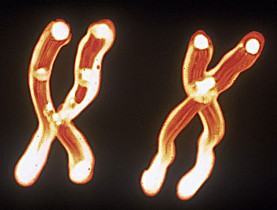Scientists make hair-raising discovery

A mutated gene found in hairless dogs could offer clues in finding a cure for baldness in humans, a Swiss-led study has found.
Scientists discovered the gene when they compared the DNA of hairless dogs and their coated cousins. The study is published on Friday in the prestigious Science magazine.
Hairless hounds have existed for almost 4,000 years and were considered sacred by the Aztecs of Mexico, who believed they accompanied people’s souls to paradise. There is even a statue of a hairless dog dating back to 1,700 BC.
These animals normally have little or no fur at all, as well as an abnormal set of teeth. A Chinese crested dog, for example, has tufts of hair on its paws and tail, but long hair on its head.
It was one of the breeds, along with Mexican and Peruvian hairless dogs, studied by scientists at Bern University’s Genetics Institute and their international colleagues.
Using the latest technology, the team compared 50,000 evenly spaced DNA markers in 20 hairless and 20-coated breeds, hoping to sniff out any mutations.
“The experiment worked out beautifully,” Tosso Leeb, professor of veterinary genetics and animal breeding at Bern University told swissinfo.
There was just one single marker in the genome, which pointed to a difference.
“This marker position was located next to a previously uncharacterised gene and then we investigated this gene in more detail and found the causative mutation and named the gene FOXI3,” said Leeb.
Increase understanding
In developing mouse embryos this gene is specifically switched on in the growing of hair follicles and teeth.
This made it clear to the team that the FOXI3 gene plays a large role in the development of those tissues and organs.
“The discovery contributes to our understanding of hair follicle and tooth development which is at this point very incomplete,” explained Leeb.
“We don’t know exactly how hair follicles or teeth are formed during embryogenesis and the implication is with a better understanding of the development of these structures it may be possible to design better and more specific therapies for hair loss problems in humans.”
One extreme form of hair loss is hypohidrotic ectodermal dysplasia, a very rare hereditary condition which results in very little or no hair in humans as well as a lack of teeth.
In some cases the gene mutations for this condition are known about, for others, FOXI3 may provide an answer, said Leeb.
Cure for baldness?
The scientists’ discovery may also help in the hunt for a cure for common hair loss. “Males especially often develop alopecia while ageing and this is for some people a very serious problem,” said the professor.
New therapies – pharmaceutical companies are currently racing to find a treatment – could eventually become possible.
“The hair follicle is very special organ. It is constantly growing, shrinking, and then growing throughout our lives and there are stem cells next to a hair follicle which can form a hair follicle at any given time,” Leeb said.
“If we know how to promote this hair cycle, how to stimulate these stem cells into growing into a new hair follicle, we could possibly help people with alopecia,” he added.
As for the dogs, the scientists uncovered some more interesting information as well. The gene mutation must be more than 3,700 years old because of the date of the Mexican statue, says Leeb. The team’s molecular genetic work supports the view that it is a very old mutation.
In fact, says Leeb, today’s furless pooches can trace their ancestry back to just one hairless dog.
swissinfo, Isobel Leybold-Johnson
Chinese crested dog:
This is a smaller breed of dog and is fine-boned. It has tufts of hair on its paws, tail and long flowing hair on its head.
Mexican hairless dog:
A rare breed which comes in three sizes, is also known as xoloitzcuintli. Its skin is pink, grey and slate in colour. It was sacred to the Aztecs.
Peruvian hairless dog:
This breed has its origins in the pre-Inca culture of the country and is similar to the Mexican hairless dog. The color of skin can be chocolate-brown, elephant grey, copper, or mottled.
Source: Britannica online, wikipedia

In compliance with the JTI standards
More: SWI swissinfo.ch certified by the Journalism Trust Initiative


You can find an overview of ongoing debates with our journalists here . Please join us!
If you want to start a conversation about a topic raised in this article or want to report factual errors, email us at english@swissinfo.ch.